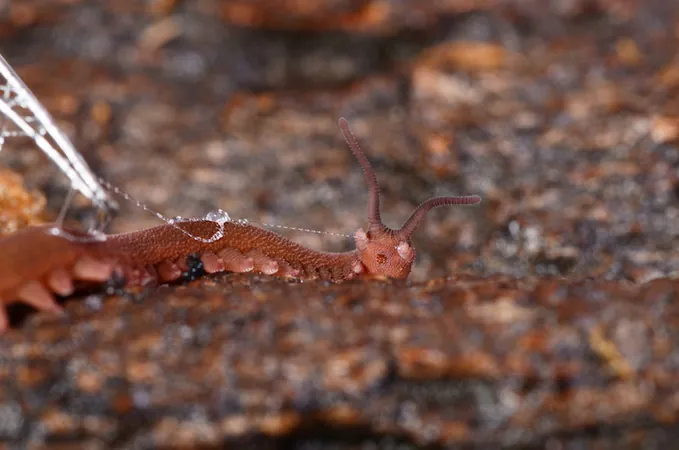
Worm Slime: The Next Big Thing in Eco-Friendly Polymers?
2025-06-13
Author: Jacob
Discover the Amazing Potential of Velvet Worm Slime
The animal kingdom often surprises us, but velvet worm slime might just take the cake for innovation! Researchers from Canada and Singapore have uncovered that this icky yet fascinating substance could significantly change how we design high-performance polymers, making them not only stronger but also way more sustainable.
The Science Behind the Slime
Matthew Harrington from McGill University, who is at the forefront of this research alongside Ali Miserez of Nanyang Technological University, has been diving into the slime's unique properties. "We were drawn to the strong fibers this slime can create, which can reversibly transform between a sticky gel and robust fibers as strong as nylon when needed," he explains. This adaptability makes it a prime candidate for inspiring new adhesives and recyclable plastics.
How Velvet Worms Work Their Magic
Velvet worms, small and caterpillar-like, reside in humid forests. What sets them apart is their ability to squirt slime from specialized glands, capturing prey or warding off threats. Astonishingly, when this fluid is mixed with water, the fibers revert back to their original forms, hinting that the instructions for their reassembly are embedded within their own structures!
Unlocking Molecular Mysteries
The researchers employed advanced protein sequencing and the cutting-edge AI tool AlphaFold to identify a crucial high-molecular-weight protein in the slime known as a leucine-rich repeat. Curious enough, this protein mirrors a type of cell surface receptor typically involved in immune responses. However, in the context of worm slime, it reveals a captivating purpose—serving as a molecular 'glue' that helps form those strong fibers.
An Ancient Evolutionary Wonder
Miserez notes that this same protein has been discovered across various species of velvet worms, all stemming from a common ancestor nearly 400 million years ago. This discovery suggests that the structural role of these proteins has been preserved through deep evolutionary history.
Towards Sustainable Innovations
Harrington emphasizes the significance of understanding how these fibers form. The team proposes that the fibers' reversibility depends on interactions between different proteins, a principle well-documented across the biological spectrum. If their theories hold true, the implications could be staggering, potentially paving the way for the creation of high-performance, non-toxic, and recyclable materials. This not only represents a leap in materials science but could also usher in a new era of sustainability!
As research continues, keep an eye on these developments—worm slime might just be the eco-friendly solution we've been waiting for!









 Brasil (PT)
Brasil (PT)
 Canada (EN)
Canada (EN)
 Chile (ES)
Chile (ES)
 Česko (CS)
Česko (CS)
 대한민국 (KO)
대한민국 (KO)
 España (ES)
España (ES)
 France (FR)
France (FR)
 Hong Kong (EN)
Hong Kong (EN)
 Italia (IT)
Italia (IT)
 日本 (JA)
日本 (JA)
 Magyarország (HU)
Magyarország (HU)
 Norge (NO)
Norge (NO)
 Polska (PL)
Polska (PL)
 Schweiz (DE)
Schweiz (DE)
 Singapore (EN)
Singapore (EN)
 Sverige (SV)
Sverige (SV)
 Suomi (FI)
Suomi (FI)
 Türkiye (TR)
Türkiye (TR)
 الإمارات العربية المتحدة (AR)
الإمارات العربية المتحدة (AR)